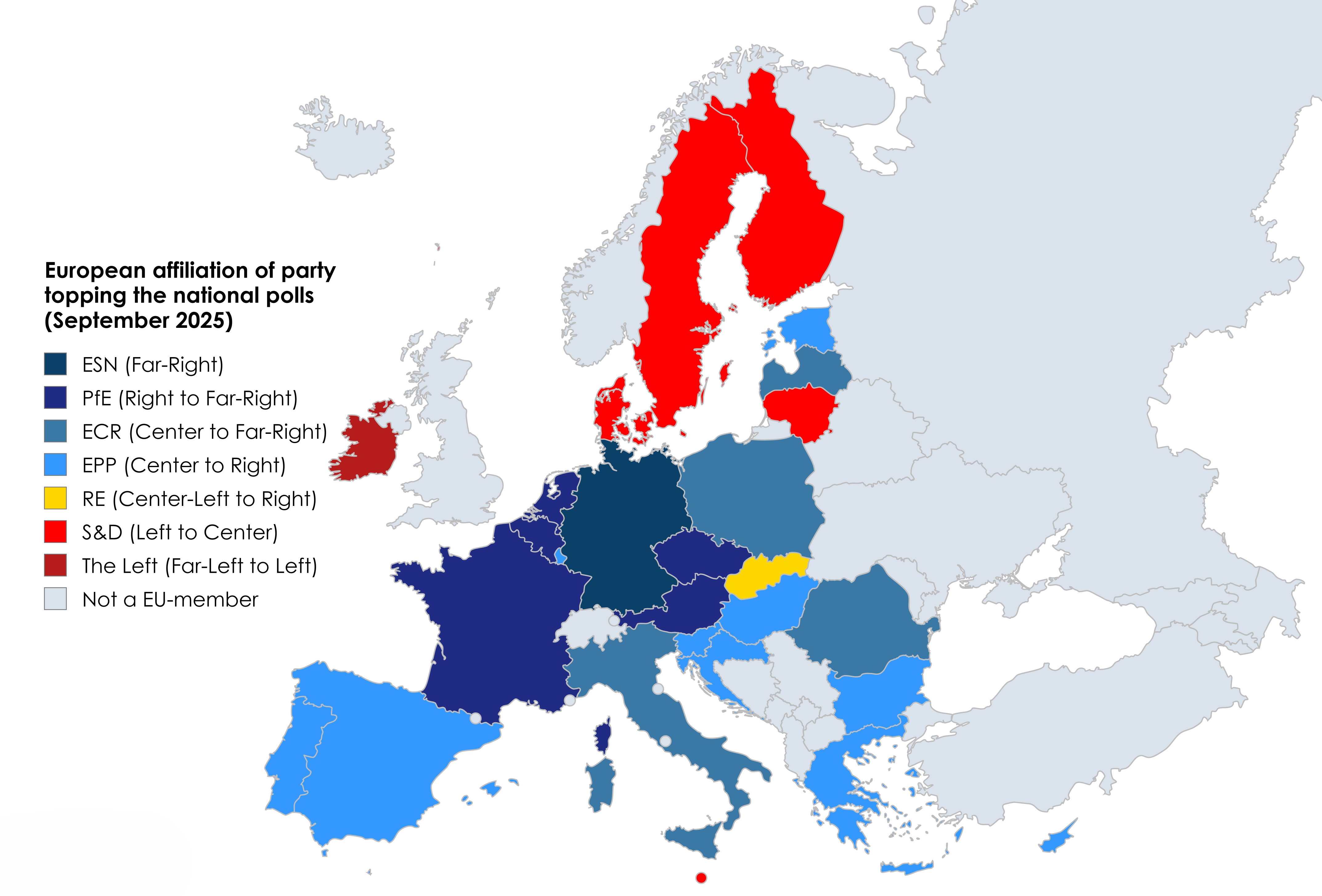EU National Polls by Party Map


Marcus Rodriguez
Historical Geography Expert
Marcus Rodriguez specializes in historical cartography and geographic data analysis. With a background in both history and geography, he brings unique...
Geographic Analysis
What This Map Shows
This map provides a clear visualization of the current political landscape in the European Union by displaying which political parties are leading national polls across member states. Each country is color-coded to represent the party that holds the highest polling percentage at the time of the visualization. Such an overview is crucial for understanding the shifting dynamics of political power within the EU, especially in the context of upcoming elections and policy-making processes.
Deep Dive into Political Parties in the EU
The political landscape of the European Union is as diverse as its member states, with a wide array of parties representing various ideologies and interests. At the heart of this landscape are the mainstream political parties, often categorized into several major groups: the European People's Party (EPP), the Progressive Alliance of Socialists and Democrats (S&D), and the Renew Europe (RE) among others.
Interestingly, the rise of populist and nationalist parties has emerged as a significant trend in recent years, challenging the traditional party structures. Countries like Hungary and Poland have seen the ascendancy of right-wing parties, reflecting a shift in public sentiment towards nationalism and away from traditional EU integrationist policies. For instance, the Hungarian Fidesz party, led by Viktor Orbán, has consistently topped national polls, showcasing an intriguing case study of how populism can reshape political discourse.
Furthermore, parties across Europe are influenced by various factors, including economic conditions, immigration policies, and public health issues, such as the COVID-19 pandemic. The pandemic has notably shifted priorities, with many voters reassessing the effectiveness of their governments' responses, leading to significant fluctuations in party support. For example, the handling of the pandemic has had a direct impact on the popularity of parties in countries like Italy and Spain, where the ruling parties faced scrutiny over their management of health crises, resulting in shifts in polling data.
In addition to populist movements, the increasing prominence of green parties reflects a growing public concern for environmental issues. The German Green Party’s rise in recent elections is a testament to this shift, as climate change has become a pivotal issue for many voters, particularly younger demographics. As awareness around climate change intensifies, it's crucial to consider how these parties might influence EU policies moving forward.
Regional Analysis
When examining the map, it becomes evident that political trends vary significantly across different regions of the EU. For example, Northern Europe tends to exhibit support for centrist and progressive parties, while Southern Europe shows a more mixed landscape, with both left-leaning and populist parties gaining ground.
In countries like Sweden and Denmark, the Social Democratic parties remain strong, reflecting a stable political environment and a commitment to welfare state principles. Conversely, in Southern Europe, nations like Greece have seen the rise of both left-wing parties like Syriza and right-wing populist movements, often in response to economic crises and austerity measures.
Eastern Europe presents a contrasting picture, where right-wing and nationalist parties dominate. The Polish Law and Justice party (PiS) has a substantial lead in national polls, reflecting a broader trend of conservative politics that has gained traction in the region, often positioning itself against EU institutions.
What’s fascinating is how these regional differences interact within the broader EU framework. For example, the balance of power shifts in the European Parliament based on the composition of national parties, impacting legislation and the direction of European policies.
Significance and Impact
Understanding the political party landscape in the EU is crucial for several reasons. Firstly, these dynamics have real-world implications for the future of EU integration, international relations, and internal cohesion. The rise of nationalist parties poses challenges to the EU’s fundamental principles of unity and collective action, often leading to tensions between member states.
Moreover, the potential for coalition governments may increase in the wake of fragmented party systems. This scenario could complicate decision-making processes within the EU, especially as member states grapple with issues such as migration, climate change, and economic recovery post-pandemic.
Looking ahead, it’s essential to monitor how these political trends evolve as the EU faces critical challenges, including the upcoming European Parliament elections. With voter sentiment shifting, the landscape could change dramatically in just a few years, making it imperative for analysts and citizens alike to stay informed about which parties are topping the polls and what that means for the future of Europe.
Visualization Details
- Published
- September 27, 2025
- Views
- 66
Comments
Loading comments...